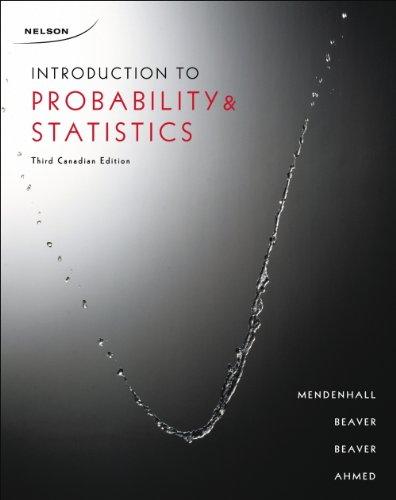c. At a diabetic clinic, a group of people considered to have prediabetes (impaired fasting glucose) were
Question:
c. At a diabetic clinic, a group of people considered to have prediabetes (impaired fasting glucose) were randomly selected. Then they were randomly assigned in two groups, namely treatment group (subject to a strict diet plan) and placebo (normal diet), for a specified number of days. After the completion of the clinical trial, their blood glucose level readings provided the following statistics:

Assume the assumptions of normality and equal variances are satisfied. (i) Is it reasonable to assume equality of variances in this problem? Justify your answer. (ii) Do the data provide sufficient evidence at the 5% significance level that the strict diet plan lowers the blood glucose level? What is the appropriate conclusion? (iii) (iv) Approximate the p-value for the test. Using the p-value approach and a = 0.10, what conclusion can be drawn about the difference in average blood glucose level readings between treat- ment and placebo groups? (v) Estimate with 95% confidence the difference in mean blood glucose levels between the two groups. Interpret the interval estimate.
Symptoms of diabetes include increased thirst and frequent urination (especially at night), unexplained increase in appetite, unexplained weight loss, fatigue, erection problems, blurred vision, and tingling or numbness in the hands or feet. If your fasting blood glucose level is between 5.5 mmol/L (100 mg/dL) and 6.9 mmol/L (126 mg/dL), you are considered to have prediabetes (impaired fasting glucose), and you have an increased chance of developing diabetes. Other conditions that can cause high blood glucose levels include severe stress, heart attack, stroke, Cushing's syn- drome, medicines such as corticosteroids, or excess production of growth hormone (acromegaly). The Canadian Diabetes Association (CDA) criteria for diagnosing diabetes are met when any of the following results have been repeated on at least two different days: . A fasting blood glucose level is 7.0 mmol/L (126 mg/dL) or higher. A 2-hour oral glucose tolerance test result is 11.1 mmol/L (200 mg/dL) or higher. Symptoms of diabetes are present and a random blood glucose test is 11.1 mmol/L (200 mg/dL) or higher. The fasting blood glucose level of a randomly selected person was measured for seven days and the following readings were made: 7.0, 7.7, 6.8, 7.1, 7.1, 6.1, 7.3. It is reasonable to assume the glucose level distribution is normal.
Step by Step Answer:

Introduction To Probability And Statistics
ISBN: 9780176509804
3rd Edition
Authors: William Mendenhall






